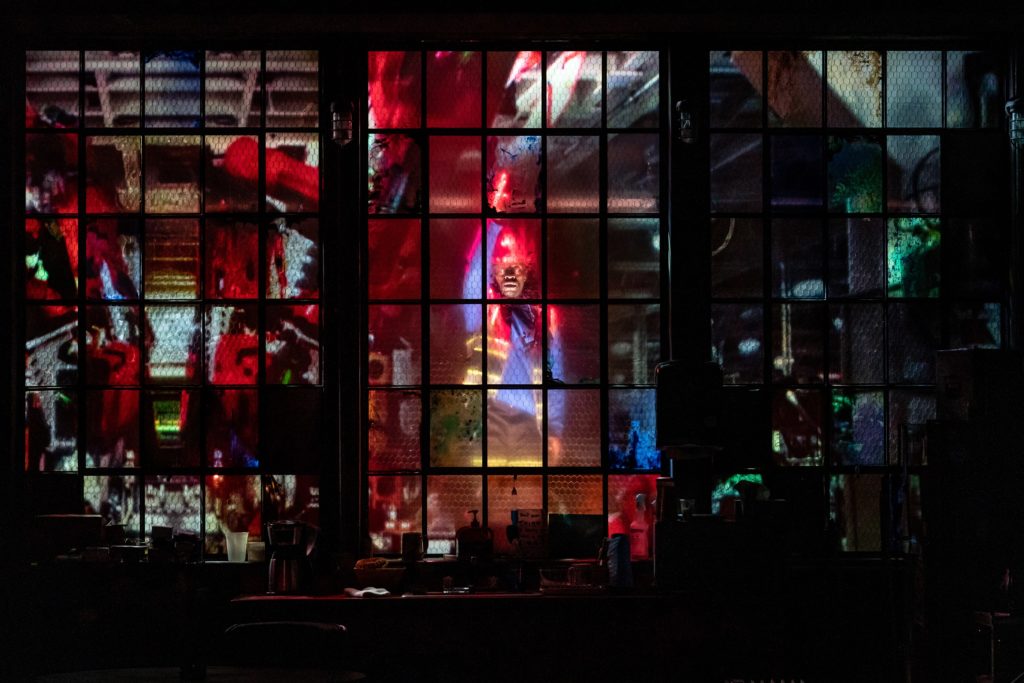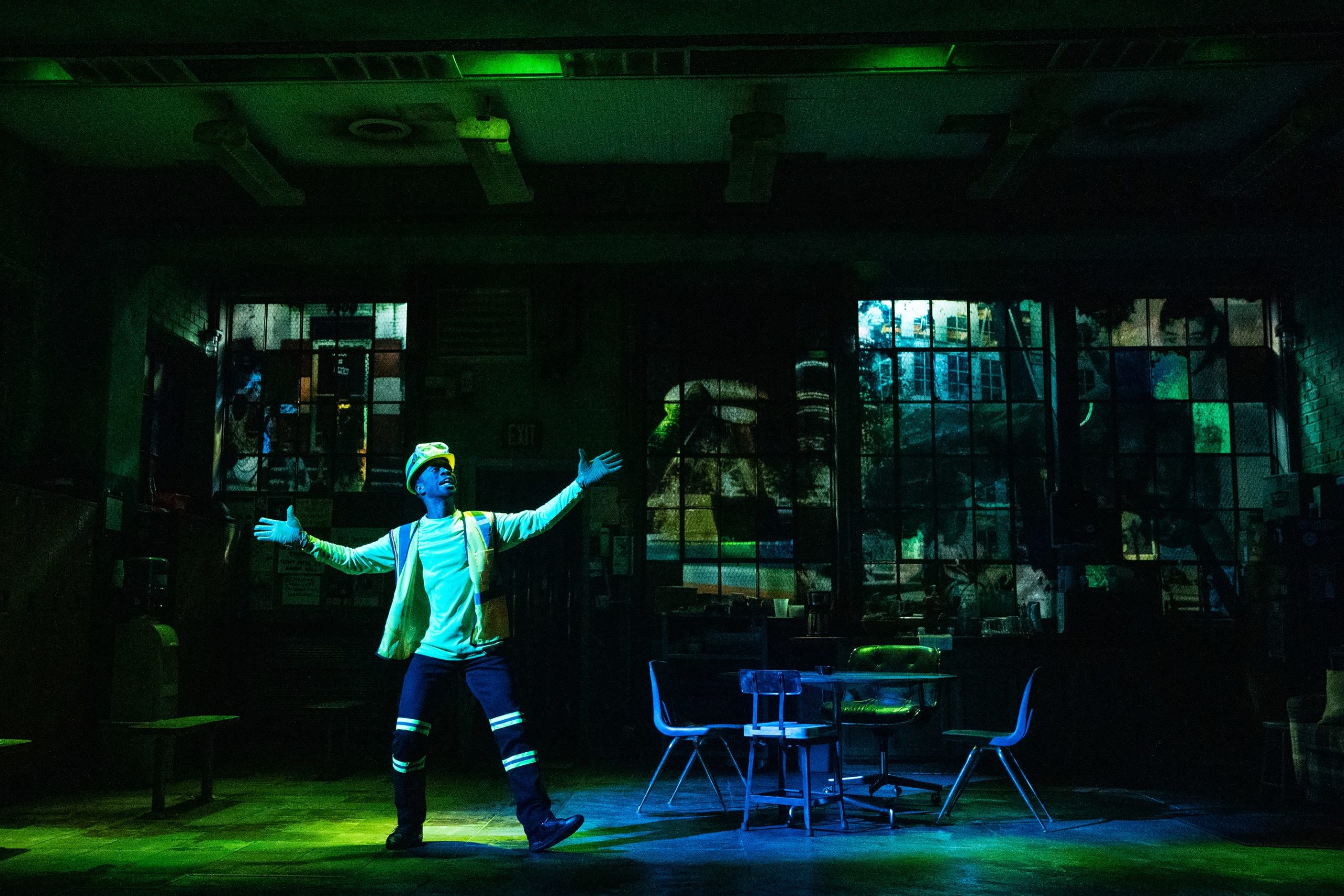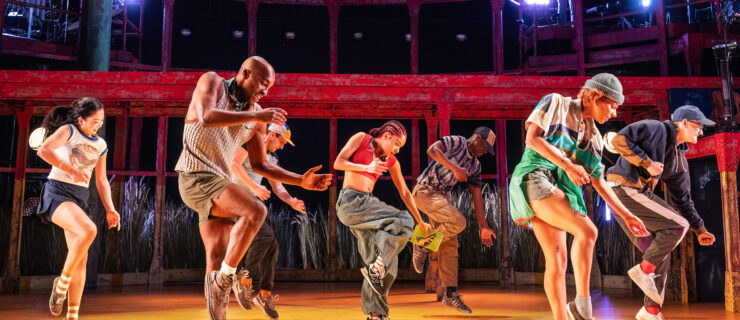This Double-Billed Performer/Choreographer Is Bringing a Surprising Amount of Dance to Broadway’s Newest Play
You couldn’t be blamed if you showed up to Skeleton Crew, a play by Dominique Morisseau starring Phylicia Rashad that just opened on Broadway, not expecting any dance. Set in Detroit in 2008, the show, directed by Ruben Santiago-Hudson, follows a group of auto workers navigating the impending closure of their factory.
But not only does Skeleton Crew have dance, it opens with dance, and dance is the thread that weaves the fabric of the show together. The man doing the weaving: Bessie winner and Broadway veteran Adesola Osakalumi, who joins the elite ranks of artists (like Savion Glover and Tommy Tune) double-billed on Broadway as both performers and choreographers.
Osakalumi, who previously appeared on Broadway in Fela! and Equus, has been with Skeleton Crew since its 2016 Atlantic Theater production and has a host of other credits, from Across the Universe to the Drama Desk–winning Jam on the Groove. He blends popping, locking and other hip-hop styles to dance us through each of Skeleton Crew’s six transitions, embodying the spirit of the factory and of the city of Detroit itself, almost like a silent narrator. Dance Magazine spoke to him about his unique role and what it means to be using hip hop to tell stories on Broadway.

How did you get involved in Skeleton Crew?
I was introduced to Ruben through a friend, another choreographer, Darrell Grand Moultrie. He explained what he wanted to do and how he envisioned it. And I was like, “I can do it. I’m the guy.” So, it was not your normal audition process. And then he called me back five years later and was like, “Hey, so, the show is going to go to Broadway, and I want you to come back.”
How do you conceive of your role?
It’s only alluded to in stage directions. It’s like, “the factory hums contentedly.” Or “the workers continue to move as the machinery starts to slowly break down.” That’s all. And Ruben envisioned bringing that spirit of the factory to life, but also showing the actual physical work that is done, because the play is set in the break room. And work is alluded to, but you never see anybody work. So Ruben was like, “Let’s show the dancing body, the Black body, at work.” He wanted something sharp and clean that expressed the power and specificity of the workers. He always talks about Detroit at one point being the center of America and by extension almost the center of the universe, because of the output of work and cars and factories, but also the music and culture that came out of Detroit. So he wanted a nod to both the auto industry and the musical legacy of Detroit.
What was your process for developing the movement like?
We had a creative team that was Jimmy Keys, who is Dominique’s husband, who did all the original music, Rob Kaplowitz, who did sound, and Chesney Snow, who did beatboxing. We would go in our own room and they would create music. It was really collaborative—I was able to request certain sounds. My own process was to use each transition as a storytelling element, either illuminating what just happened in the scene or leading us into a scene. My intention in the prologue is to tell the story of the whole two hours in two minutes. I give little physicalizations of what each character does. I think when people hear “hip hop,” they are like, “How can this be used as storytelling?” And I totally disagree. This shows that there are a variety of styles of dance that are worthy of the Broadway stage.
Why do you think those stories needed to be told through movement specifically?
Two reasons: The energy of the piece—it’s set in Detroit, it’s a natural extension of the music, culture, spirit. And, the rote, repetitive nature of a stamping plant. There are parallels between the rote, repetitive nature of people studying dance and training. It’s been one of the most-produced plays in the last three or four years, and not all of the productions have used dance, but a lot of them have, and I think that speaks to the validity of what Ruben and I set forth.




